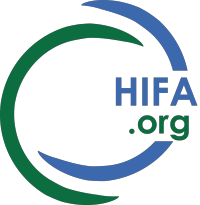Dear HIFA-Zambia and CHIFA,
This paper on infant death emphasises the role of delays in seeking care. Citation, abstract and comment from me below.
CITATION: Lapidot, R. et al. Verbal autopsies for out-of-hospital infant deaths in Zambia. Pediatrics; 2021. 147(4). [restricted access]
ABSTRACT
OBJECTIVES: In Zambia, a significant number of infants die in the community. It is hypothesized that delays in care contribute to many of these so-called "brought in dead" infants.
METHODS: We analyzed free-text narratives from verbal autopsies, in which families narrate the final series of events leading to each infant's death. Using the 3-delays model framework and working iteratively to achieve consensus, we coded each narrative using NVivo software to identify, characterize, and quantify the contribution of delays and other factors to the fatal outcome.
RESULTS: Verbal autopsies were collected from 230 families of brought in dead infants younger than 6 months of age. As many as 82.8% of infants had 1 or more delays in care. The most-common delay was in the family's decision to seek care (54.8%), even as severe symptoms were frequently described. Similarly, 27.8% of infants died en route to a health care facility. Delays in receiving adequate care, including infants dying while waiting in line at a clinic or during referral from a clinic to a hospital, occurred in 24.7% of infants. A third of infants had been previously evaluated by a clinician in the days before their death.
CONCLUSIONS: Delays in care were the rule rather than the exception in this population of Zambian infants. Accessing care requires families to navigate significant logistic barriers, and balance complex forces in deciding to seek care. Strategies to avoid such delays could save many infants lives.
COMMENT: 'Strategies to avoid such delays could save many infants lives.' The question is: what strategies, and how can they be implemented. On CHIFA we have often emphasised the importance of access to basic healthcare information, and the ability to recognise danger signs. Research has repeatedly shown a lack of both. Of course, as the paper notes, there are many factors involved as parents 'balance complex forces in deciding to seek care'. Social autopsy (whereby an attempt is made to identify contributory factors leading up to death) is a valuable tool to understand such factors, but this is rarely feasible other than in occasional research settings.
Join CHIFA (child health and rights): http://www.hifa.org/joinchifa
Join HIFA-Zambia: http://www.hifa.org/join/join-hifa-zambia
Best wishes, Neil
Let's build a future where every person has access to reliable healthcare information and is protected from misinformation - Join HIFA: www.hifa.org
HIFA profile: Neil Pakenham-Walsh is coordinator of the HIFA global health movement (Healthcare Information For All - www.hifa.org ), a global community with more than 20,000 members in 180 countries, interacting on six global forums in four languages in collaboration with WHO. Twitter: @hifa_org FB: facebook.com/HIFAdotORG neil@hifa.org

